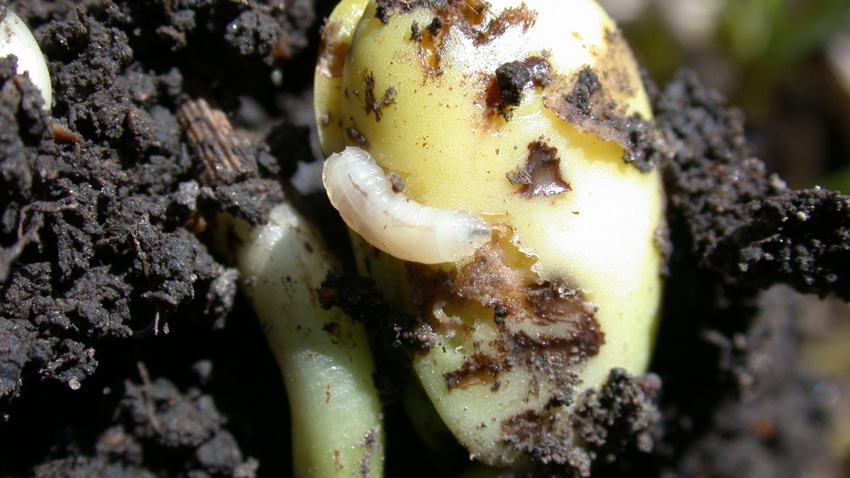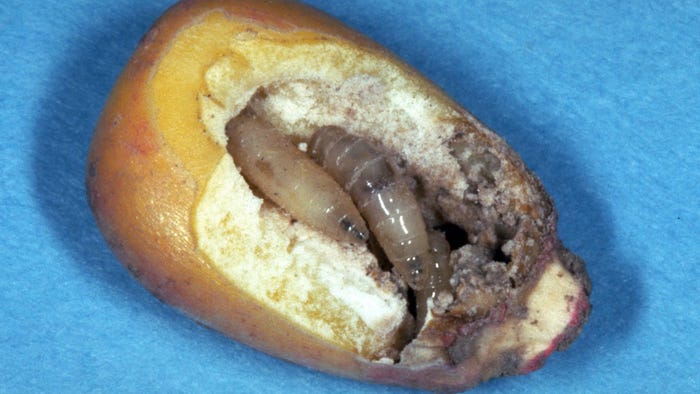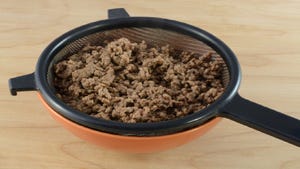
Surgery in humans is only minor if you’re not the patient. Likewise, seed-corn maggots and similar early-season insect pests are “out of sight, out of mind” as long as damage reports are from somebody else’s field miles away. But if these insects show up in your field, it’s a 911 emergency. And it may be like calling the fire department in an effort to keep the fire from spreading — it may be too late to help that field.
Because of the big hit seed-corn maggots can deliver, Mark Jeschke included information about them in the 2023 Pioneer Agronomy Research Summary. Cori Lee, an agronomy sciences intern with Pioneer, prepared an extensive report on the pest.
Here are key takeaways from Lee’s report. Taking a closer look now could prevent lots of frustration later should seed-corn maggots decide to target your fields.
Both corn and soybeans. Don’t let the insect’s name fool you, Lee says. In that larval stage, seed-corn maggots can feed on germinating seeds or emerging seedlings in both corn and soybeans. In soybeans, they can destroy cotyledons. Entry points from feeding can expose seedlings to secondary infection by disease pathogens. In both crops, injury can be severe enough to warrant replanting.
Where they strike. Pest pressure is common in fields with a history of infestation. Seed-corn maggots overwinter in the soil as pupae. They’re more likely to appear in fields tilled recently, or in fields with high organic matter from manure, cover crops or weeds.

DOUBLE TROUBLE: These two seed-corn maggot larvae have hollowed out a new home inside this corn kernel. (Photo by Mark Jeschke, Pioneer)
Life cycle. Adults emerge from the soil in the spring after the ground thaws and adequate heat units accumulate. Females prefer laying eggs in freshly plowed fields. Eggs hatch within days into destructive larvae. Three to four generations are possible within a growing season, but they’re only a threat to corn and soybeans during planting season.
Scouting. Pay careful attention in freshly planted fields with high organic matter and decaying vegetation. Plus, populations tend to be higher following soybeans vs. following corn. Check the entire field, because infestations are likely to occur in a whole field vs. spots. If you see damage on small plants, dig around the plants and look for larvae. In corn, look for the seed and determine if maggots fed on it.
In the pupa stage, a seed-corn maggot takes on a wheat-seed-like appearance with a caramel brown color and hard, football-shaped casing. Adults resemble houseflies in shape, with a grey-brown color and red eyes.
Management. There are no rescue treatments for seed-corn maggots, Lee says. That’s why an infestation is often a death knell for a field, signaling the need for replanting. Insecticide seed treatments generally provide effective protection. If you suspect severe pressure, consider in-furrow insecticides.
Cultural practices that may help include delaying planting until the soil warms up, creating faster gemination and emergence; avoiding cool, wet periods to plant; terminating cover crops early; and waiting two weeks after tillage or manure application to plant.
About the Author(s)
You May Also Like




